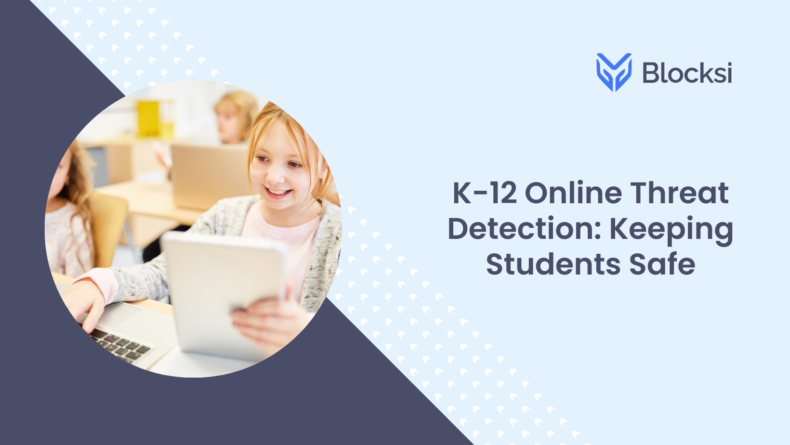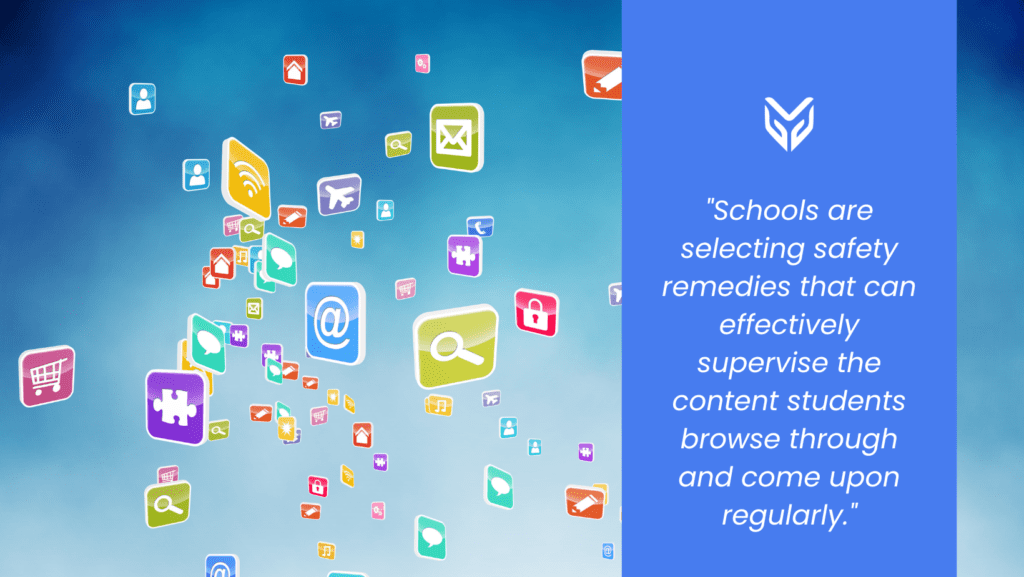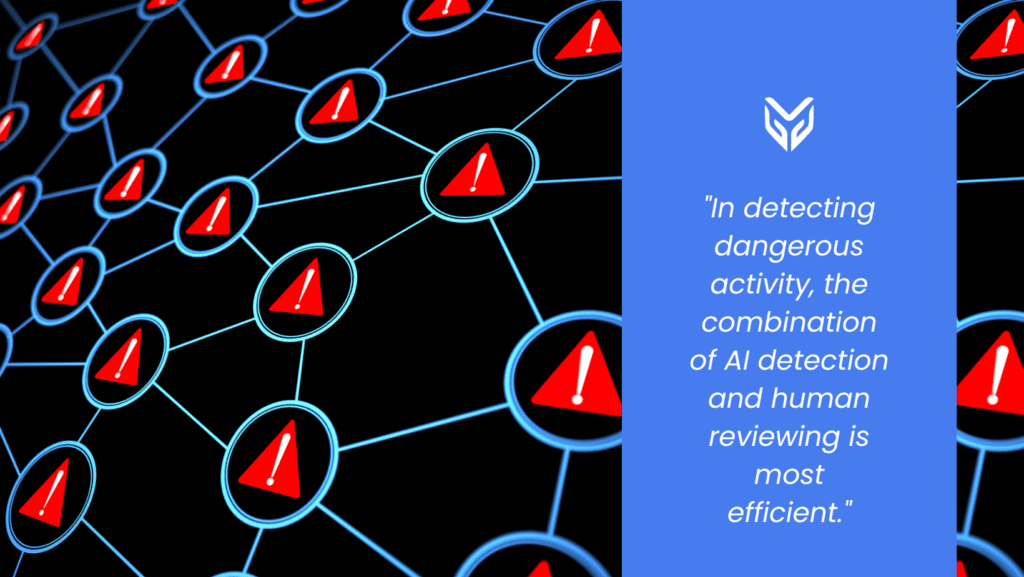NEWS
K-12 Online Threat Detection: Keeping Students Safe

According to the K-12 SIX 2022 report, publicly disclosed K-12 cyber incidents are continuously growing. But data breaches, ransomware, invasions, and similar threats are not the only dangers K-12 students face nowadays. But even with the severity of the threats and numerous cybersecurity risk management standards for schools at both state and federal levels, students and other K-12 community members remain at daily risk. And that is why proper and sufficient K-12 online threat detection is essential for every school district.
K-12 students are devoting a substantial fraction of their time to digital pursuits. Nowadays, technology constitutes an integral part of their education, and 1:1 school districts that provide every student access to their own school device are gaining more traction. Nonetheless, our dependence on these technological frameworks has given rise to an upswing in cyber dangers, which are growing in sophistication and frequency. Therefore, online student safety in K-12 education is of utmost importance and needs to be the foremost concern of every school.
Besides acknowledging cyber threats from outside, we mustn’t forget about internal threats such as cyberbullying, especially considering how catastrophic the consequences of it can be on the students. They include but are not limited to emotions of melancholy, exasperation, animosity, embarrassment, academic inadequacy, lack of sleep, and even suicidal thoughts. Thus, schools are selecting safety remedies that can effectively supervise the content students browse through and come upon regularly.

How To Tackle K-12 Online Student Safety?
Faced with a persistent barrage of cyber threats, numerous K-12 educational institutions and districts are striving to enhance their defensive maneuvers. Detecting and responding to threats are important strategies, and the use of managed services to support these functions is increasing rapidly.
One of the most common ways of maximizing student online safety is using K-12 online threat detection tools. A constructive technique for discovering possible threats is to use web filtering for schools. These filters restrict access to websites and online content that may be considered inappropriate or harmful to learners. Using software that can filter out such content based on URLs, content categories, and the content itself provides a layer of security, shielding students from various online dangers.
School web filters supported with student safety tools can detect harmful content, such as in school emails and Google searches. Moreover, they can alert school authorities if a student attempts to access restricted content. This enables educators and school administrators to monitor the screen-time activities of their students and take appropriate measures to safeguard them. This ability is an effective and valuable tool for identifying potential threats to K-12 students.

What Does Web Filtering for Schools Include?
School web filter tools that can be a part of comprehensive classroom management tools, such as Blocksi, usually include:
- Filtering online content (schools can control what content K-12 students can access by enforcing policies and web filters). These filters and policies can be modified according to time, location, IP address, age groups, and more.
- Filtering YouTube content (schools can also thoroughly filter YouTube content, again choosing from different video categories, keywords, channels, etc.).
- Supervising and monitoring in-time and over time what students do on school devices.
- Enhancing individual and group communication (encouraging teacher-student conversations and healthy communication between students).
But That Is Only the Start of Achieving Superb Student Safety
Some of the finer web filtering products are also supported with additional student safety features, which helps cover all students’ online activities. So, filtering emails and students’ chats is also covered. By offering monitored individual and group communication, healthy communication between students and teacher-student conversations are encouraged. In detecting dangerous activity, the combination of AI detection and human reviewing is most efficient. This helps detect hate speech, inappropriate content, and anything that could lead to cyberbullying or other dangerous and harmful behavior.

By doing all of this, K-12 online student safety can be ensured through eliminating both inappropriate external content and internal content that could be produced by unmonitored students. So, both internal and external threats are covered.
K-12 Online Threat Detection Is Key to Student Online Safety
Given the escalating reliance on technology for the functioning of school districts, it is reasonable to anticipate that, in the absence of substantial intervention, instances of cyber disruptions will persist in affecting school districts and remain a considerable threat. But by taking the appropriate measures, this can be controlled and avoided. Thus, implementing effective K-12 online threat detection is crucial.
Implementing K-12 threat detection offers numerous advantageous characteristics for educational institutions, rendering it indispensable to any school’s technical security plan. The well-being of students and educators generates positive emotions, streamlines the educational process, and elevates academic performance. School districts must acknowledge that and ensure sufficient web filtering for schools and other student online safety tools that eliminate or detect cyber threats before they cause real damage.
SOURCES
[1] THE STATE OF K-12 CYBERSECURITY: YEAR IN REVIEW, 2022 Annual Report





